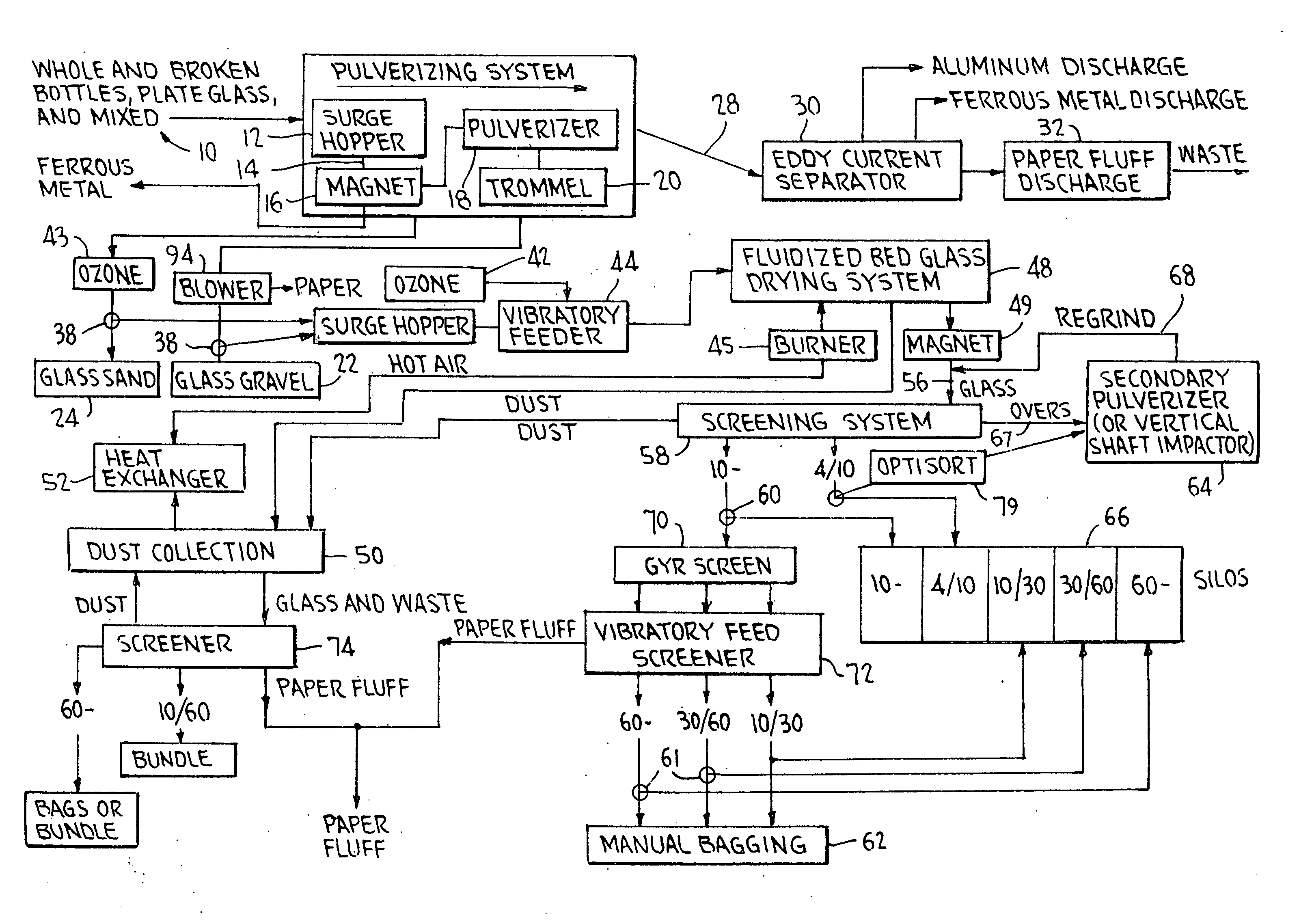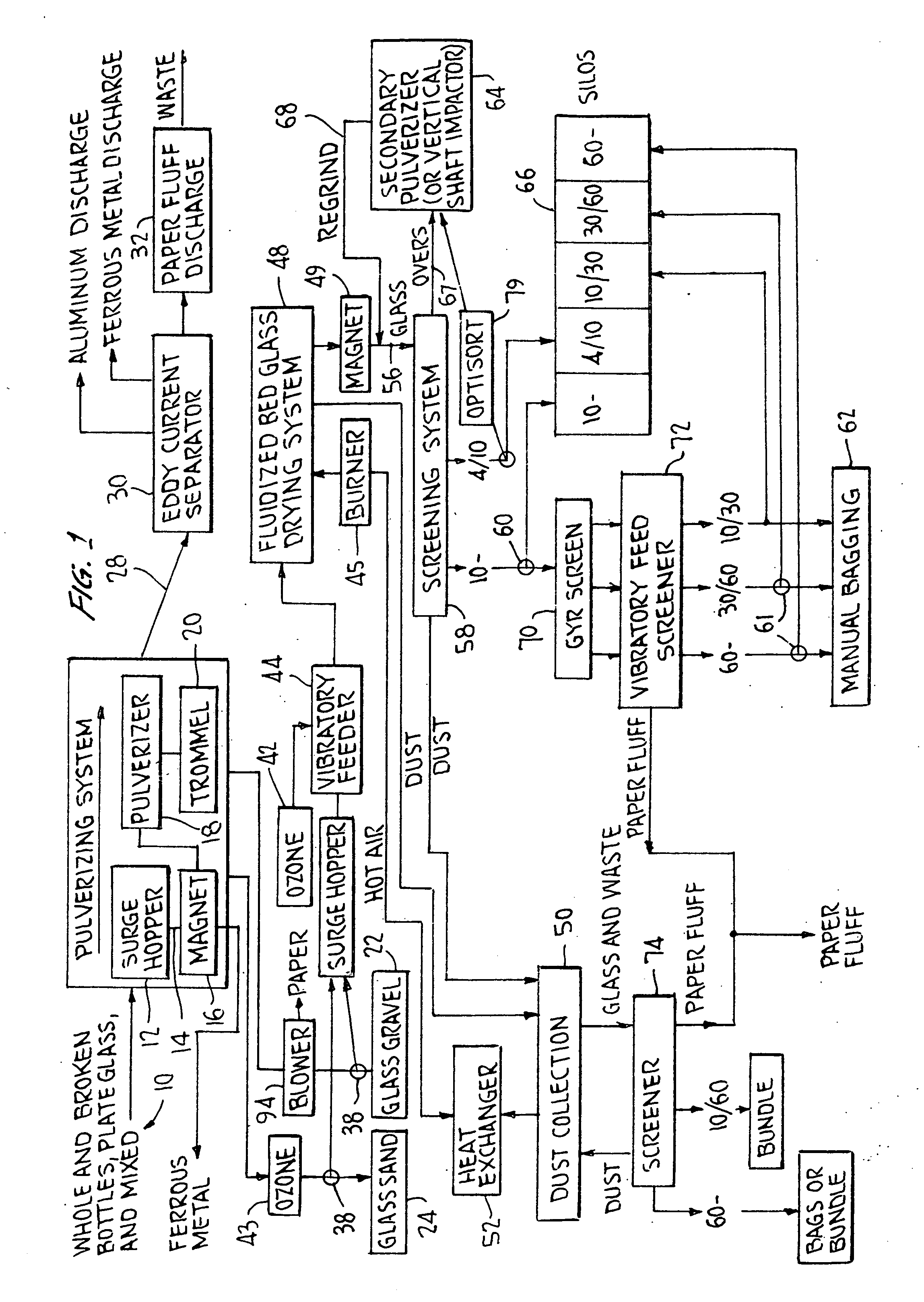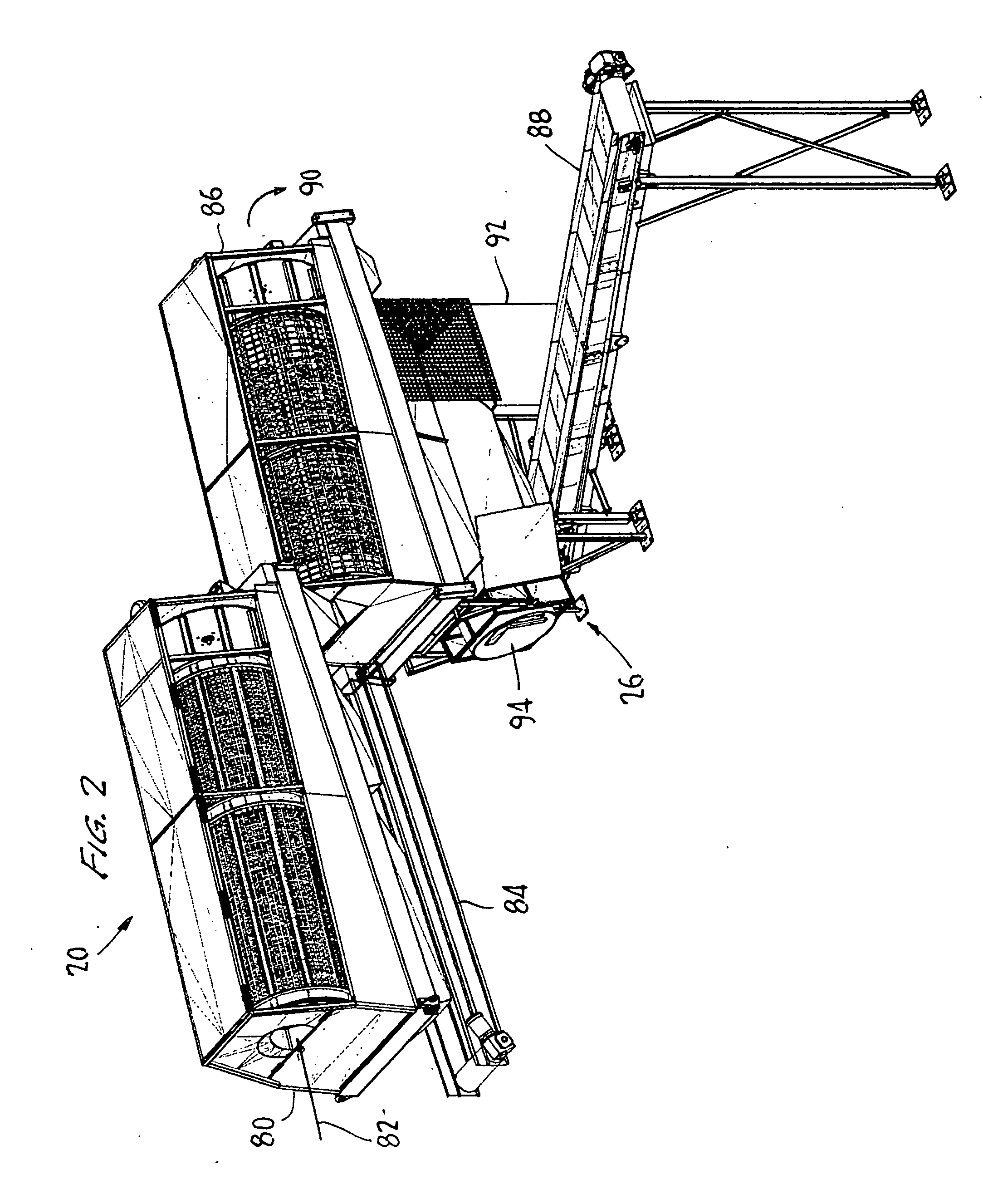Production of clean glass particles from post-consumer waste
a technology of post-consumer waste and glass particles, which is applied in the direction of mechanical material recovery, solid separation, sorting, etc., can solve the problems of not being able to solve the problems of paper removal from glass particles, no satisfactory system, etc., and achieve the effect of avoiding the production of ashes
- Summary
- Abstract
- Description
- Claims
- Application Information
AI Technical Summary
Benefits of technology
Problems solved by technology
Method used
Image
Examples
Embodiment Construction
[0026]As indicated above, FIG. 1 shows a basic flow diagram of the process of the invention. The waste stream to be processed arrives at 10. In general, no pre-screening or presorting of the mixture of broken glass, paper, plastic, and metal found in the typical post-consumer recycle stream is necessary, although the non-glass material mixed in with the glass should generally be less than six inches in largest dimension. Many post-industrial waste glass streams can be similarly processed.
[0027]At 12, the unsorted, dirty post-consumer and / or post-industrial waste glass mix is loaded into a surge hopper to meter the material onto a conveyor indicated at 14. The material is then conveyed under a cross-belt magnet 16 to remove the bulk of the ferrous metal; further steps described below remove any remaining ferrous metal, e.g. bottle caps that are still attached to bottles.
[0028]The material is then conveyed directly into a glass pulverizer 18, to selectively reduce the glass to particl...
PUM
 Login to View More
Login to View More Abstract
Description
Claims
Application Information
 Login to View More
Login to View More - R&D
- Intellectual Property
- Life Sciences
- Materials
- Tech Scout
- Unparalleled Data Quality
- Higher Quality Content
- 60% Fewer Hallucinations
Browse by: Latest US Patents, China's latest patents, Technical Efficacy Thesaurus, Application Domain, Technology Topic, Popular Technical Reports.
© 2025 PatSnap. All rights reserved.Legal|Privacy policy|Modern Slavery Act Transparency Statement|Sitemap|About US| Contact US: help@patsnap.com



